What is tuna?
Being popular around the world, tuna, or maguro, in Japan especially plays an important role in its food culture.
The country is one of the largest consumers of tuna globally, and bluefin tuna is particularly popular.
Fresh tuna is commonly used for raw dishes, such as sushi and sashimi, or processed for canned and dried foods.
The history of tuna as a food dates back to ancient times, with evidence of Phoenicians and ancient Greeks fishing for and valuing tuna as a food source.
In Japan, tuna bones have been found in remains from the 3rd to 7th centuries, indicating that the fish has been consumed since ancient times.
From the 17th to 19th centuries, tuna became popular among common people and was commonly served as sushi and sashimi.
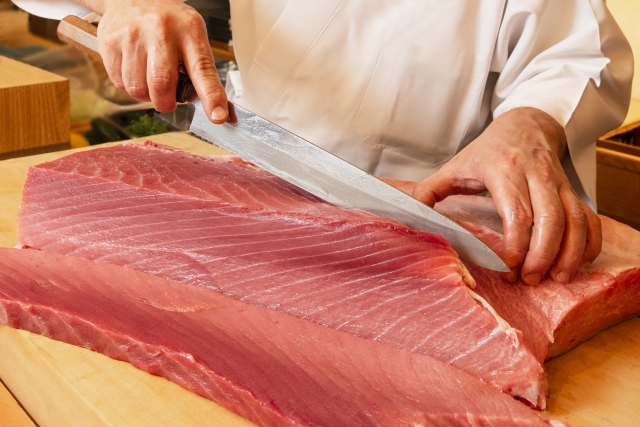
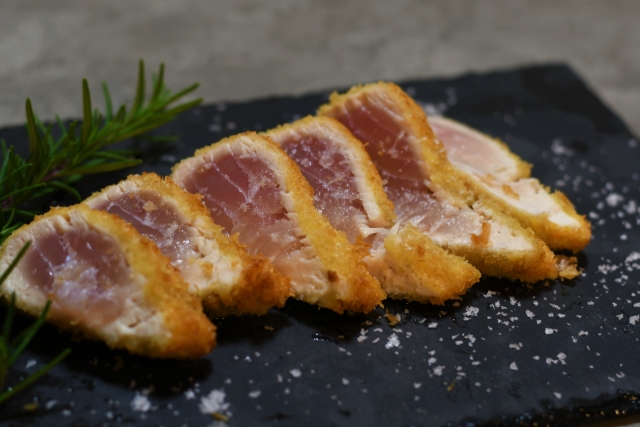
Varieties of tuna
Tuna is used in many dishes for its rich flavor and tender texture.
Below are some typical tuna dishes.
Sushi and sashimi
Fresh tuna is an ideal ingredient for sushi and sashimi.
It is known for its melt-in-your-mouth texture and deep flavor, with the taste varying depending on the cut of the fish.
The portions of tuna used include otoro (high-fatty tuna), chu-toro (medium-fatty tuna), and akami (red meat tuna).

Negitoro (chopped tuna)
This refers to finely chopped tuna.
The meat remaining between the tuna bones is called nakaochi, and scraping it off with a spoon is called "negiru" in Japanese.
This is where the name negitoro is said to come from.
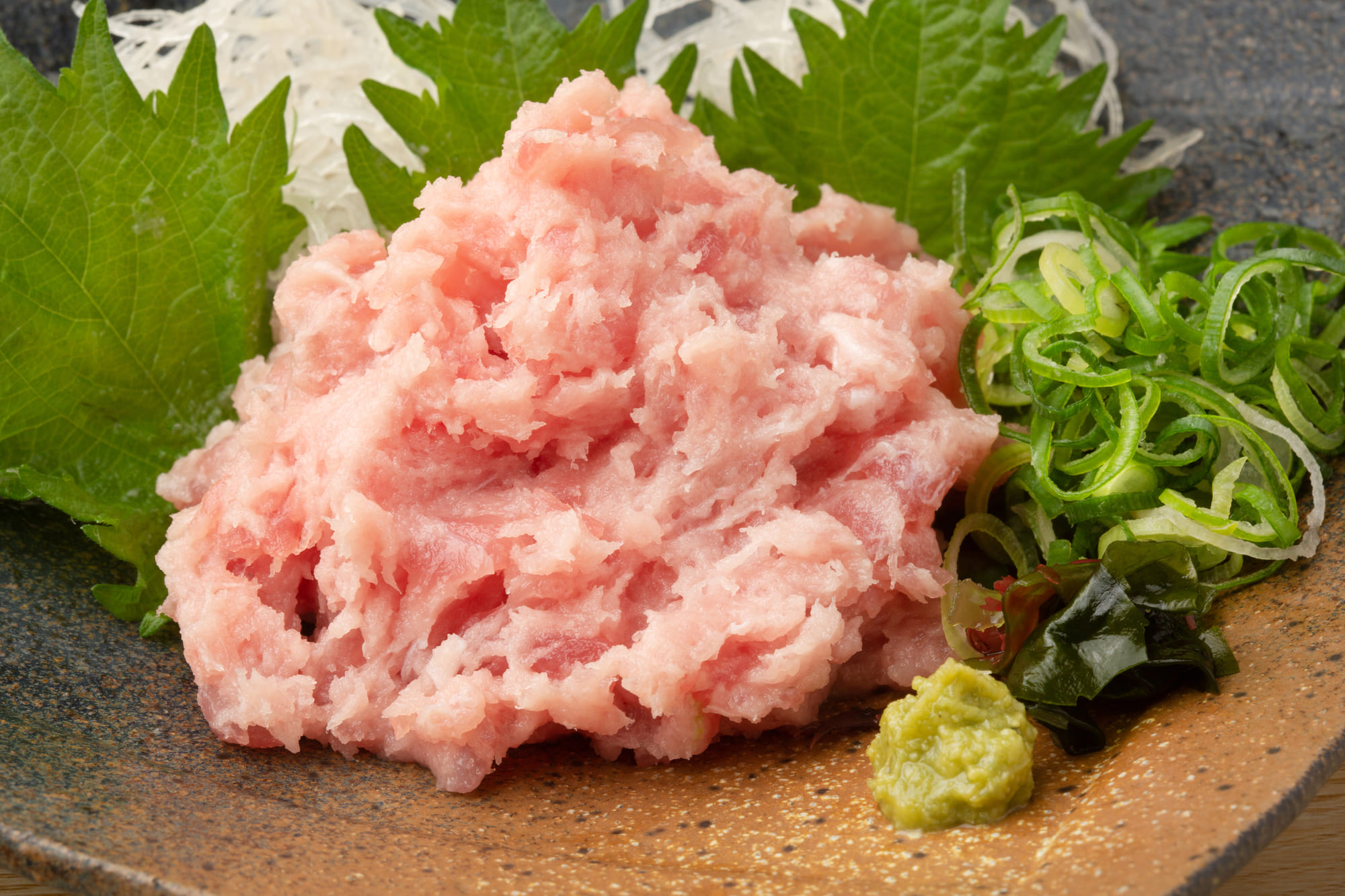
Tuna steak
Another way to prepare tuna is to cook a thick slice of it as a steak.
A steak is cooked crispy on the outside and juicy on the inside.
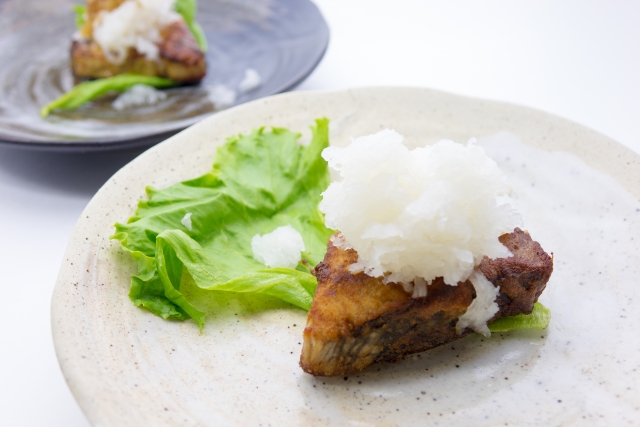
Maguro-don (tuna rice bowl)
Trimmed tuna is placed on a bed of rice and seasoned with a soy sauce-based sauce.
The dish is modest in appearance, but you can savor the delicious flavor of tuna.
A bowl of rice topped with tuna that has been marinated in soy sauce is also called a zukedon.
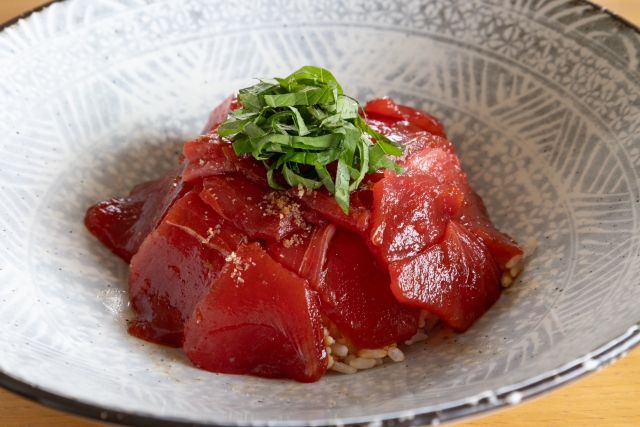
Tuna cutlet
Tuna cutlets are made with the lean parts of tuna, coated with a batter, and deep-fried like tonkatsu.
The lean meat is low in fat, yet becomes juicier when made into cutlets, giving it a distinct flavor.
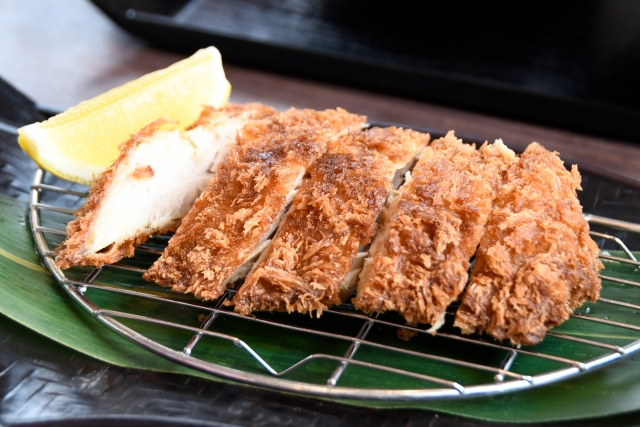
Cuts of tuna
Below are the common cuts of tuna used in cooking.
Otoro (high-fatty tuna)
The meat is obtained from the abdomen of the tuna and is the part with the most fat.
It is known for its extremely tender, melt-in-your-mouth texture and rich flavor.
It is prized as a luxury topping for sushi and sashimi.
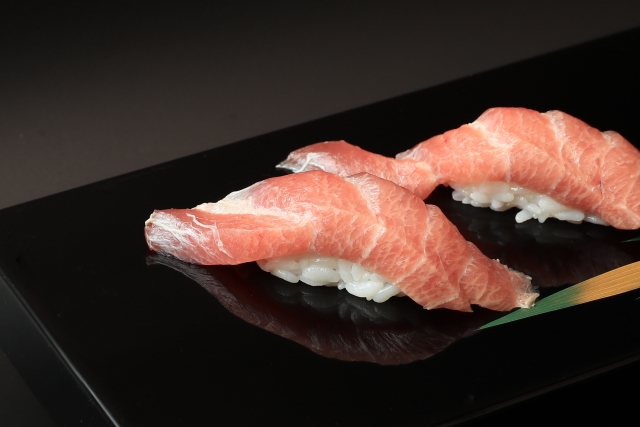
Chutoro (medium-fatty tuna)
It is located between otoro and akami (red meat tuna), with not as much fat as otoro, but more than akami.
It is lighter than otoro, but has a rich and deep flavor.
Like otoro, it is used for sushi and sashimi.
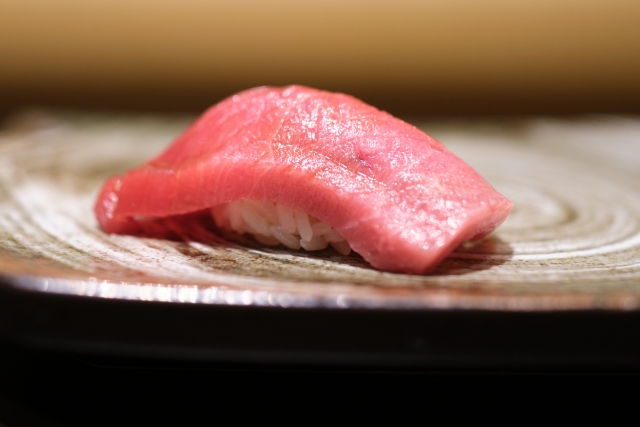
Akami (red meat tuna)
This is located on the back side of the fish and has relatively little fat.
It has a firm texture and deep flavor.
Akami is used for sushi, sashimi, or simmered dishes.
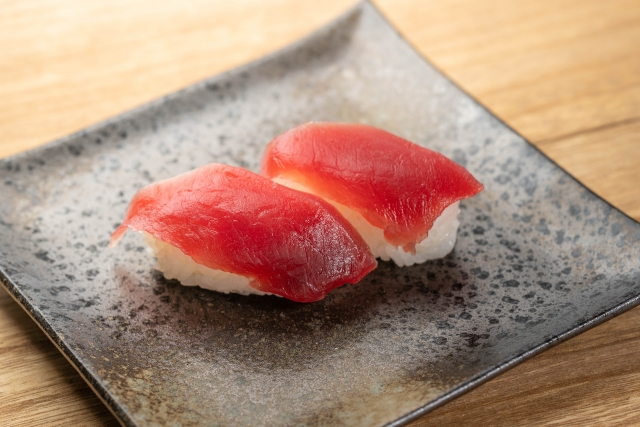
Kama (tuna meat around gill)
This is the part near the head and around the spine.
It is fatty, soft in texture, and is widely enjoyed as grilled or fired.
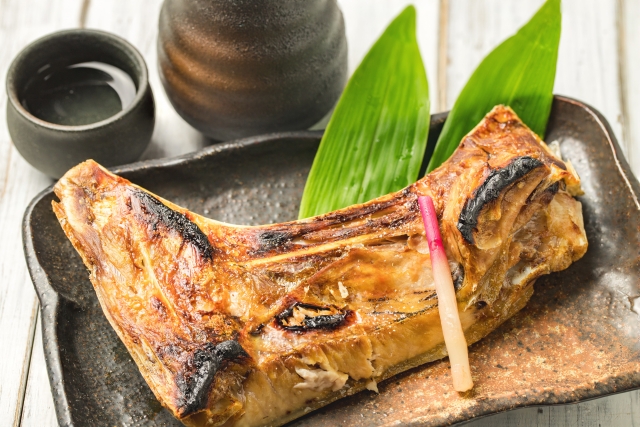
Tail
This cut near the tail is a little firmer due to its muscular development.
It has a lighter flavor than other parts of the fish and is suitable for steaks, simmered dishes, and tataki sashimi.

Cheek
This is the cheek area of the tuna, and can only be obtained in very limited quantities.
It has a delicate and juicy taste and is used for sashimi and lightly grilled dishes.
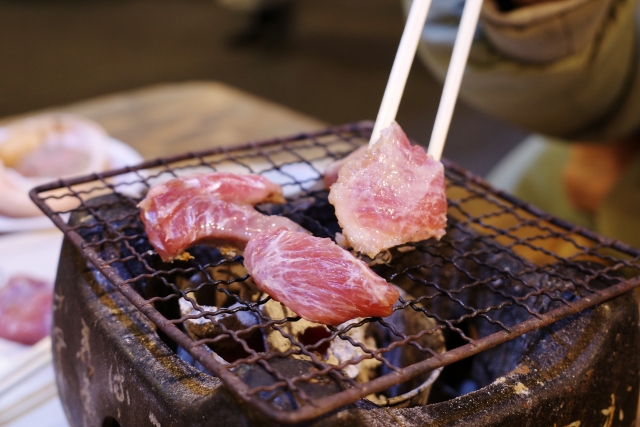
How to eat tuna
The way you eat tuna depends on how it is cooked.
The following explains how to eat some of the most common tuna dishes.
Sushi
Pour soy sauce into a small dish before eating.
Hold the sushi piece with chopsticks or your hand, lightly dip the topping side of the piece in soy sauce on the small plate, and bring it to your mouth.
Sashimi
Just like sushi, pour soy sauce into a small dish before eating.
Dip a slice of sashimi into soy sauce on the small plate and eat.
Maguro-don and negitoro-don (tuna rice bowl and chopped tuna rice bowl)
For maguro-don, enjoy it without adding anything.
The tuna has already been marinated in and seasoned with soy sauce.
However, if your bowl has unseasoned tuna or negitoro, pour soy sauce on a small plate first.
Then, dissolve some wasabi in the soy sauce and pour it over the entire bowl.
Pour soy sauce with dissolved wasabi over the entire bowl and eat.
Tuna steak
Similar to beef steaks, if a sauce is served with it, pour the sauce on the steak.
If not, enjoy it without adding anything.
Tuna cutlet
Enjoy it with the soy sauce or tonkatsu sauce served with it.
People’s reaction when eating
Famous Tuna-Producing Regions in Japan
Japan is home to many world-renowned tuna-producing regions, each benefiting from rich fishing grounds that create distinct and flavorful characteristics. Here are some of the most notable and widely recognized regions.
Ōma (Aomori Prefecture)
Ōma is considered the most famous tuna-producing area in Japan. Bluefin tuna from Ōma grow strong and flavorful as they battle the rough tides of the Tsugaru Strait and feed on abundant natural prey. Known for its firm texture and refined fat, Ōma tuna often fetches extremely high prices at the first auction of the year at the Toyosu market, drawing global attention.
Misaki Port (Kanagawa Prefecture)
Located on the Miura Peninsula, Misaki Port has a long history as a major hub for tuna fishing. Both wild-caught and farm-raised tuna are traded here, making it one of Japan’s leading tuna landing ports. The area also offers many restaurants where visitors can enjoy various tuna dishes. Its easy access from Tokyo makes it a popular destination.
Yaizu (Shizuoka Prefecture)
Yaizu Port in Shizuoka is known as one of Japan’s top bases for deep-sea fishing. Tuna caught from oceans around the world are brought here, and the region is especially known for its high-quality bigeye tuna. In addition to sashimi and sushi, Yaizu is also famous for producing canned tuna.
Nachikatsuura (Wakayama Prefecture)
Facing the Kumanonada Sea, Nachikatsuura Port is famous for handling a large amount of fresh, unfrozen bluefin tuna. Its signature appeal lies in its focus on “fresh tuna” rather than frozen, offering a delicate texture and vibrant flavor. For those seeking high-quality tuna in the Kansai region, Nachikatsuura is an excellent choice.
Kesennuma (Miyagi Prefecture)
Situated along the Sanriku Coast—one of the world’s greatest fishing grounds—Kesennuma is highly regarded for producing bigeye and albacore tuna. The meeting of warm and cold currents creates a rich marine environment, resulting in tuna with a well-balanced combination of fat and umami.
Search Restaurants by Destination

Search Restaurants by Popular Cuisines





